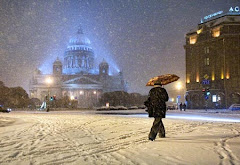
The Linn Henley research library in downtown Birmingham, Alabama is a treasure trove, stacks and files full of historic knowledge. Glorious neoclassical architecture, a grand central staircase, lofty beamed ceilings and muted murals gracing the walls.
The stately four-story building sits across from the landmark Tutwiler hotel, and on the grounds of Linn Park, with its expanses of green lawn, tall trees, and reflecting pools leading to a central fountain. Connected by a crosswalk to the Linn-Henley, the Birmingham Public Library is more modern and decidedly less majestic.
I drift back and forth between the two, which are both a part of the Jefferson County Cooperative Libraries system. Each has its advantages. Some days I prefer the quiet and relative solitude of the Lynn Henley, with its studious long desks and table lamps and lack of florescent lighting. The building is so alluring and seems to hold secrets.
For one, the Agee Map Collection lies, in part, behind a locked wooden door, a small window tantalizingly revealing tables and a computer or two, along with thousands of dollars worth of historical maps. I was highly disappointed to learn that the collection is closed to the public until more of the originals can be digitized. This is a worthy endeavor that I would thrill to be a part of.
On another note, the extraordinary archival collection of the Linn Henley rests on the basement floor, curated by one Mr. Jim Baggett, who has worked at the library for more than 17 years. He spoke with me about aspects of the Civil Rights collection there, which I have been utilizing for a school reference project. There are certainly many more treasures to discover there.
The Birmingham Public Library is larger, brighter, and houses newer books, periodicals, and audiovisuals on every subject. The Friends of the Birmingham Public Library operate a small bookstore on the second floor. A wise-looking black woman by the name of Pat Thomas is usually working there. The librarians are efficient and friendly, although the patrons often seem unfamiliar with the customs of libraries, talking loudly amongst themselves.
All in all, both libraries embody the spirit of Alabama, and they are my anchor in the midst of the soot and city blocks. The libraries' continued technological growth equates its future to an extent. However, the libraries' sense of permanence in Birmingham's history is forever assuring. If a beautiful building and its caretakers can guard such treasure of knowledge, it seems all can still be well in the world.






